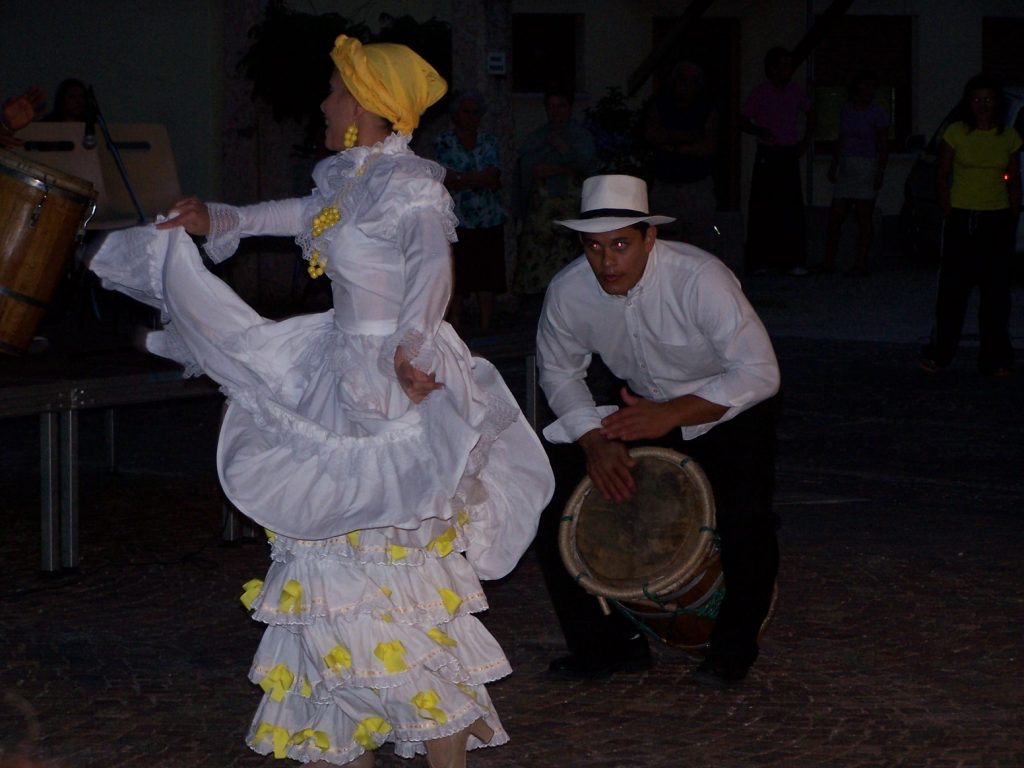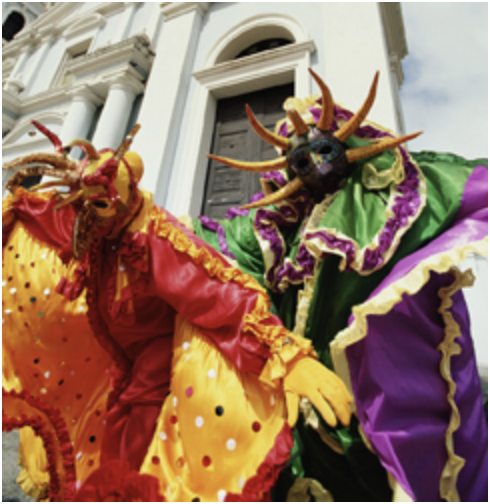The article I chose to talk about is titled Dress and Dance in Puerto Rico, this article is found in the book Berg Encyclopedia of World Dress and Fashion under the chapter titled “Part 4: The Caribbean”. This section addresses the history and different influences behind typical Puerto Rican garments used in traditional dances and festivals. The article starts by looking at the Taínos and Spanish colonialism in the 1400s explaining how the Taínos’ short frontal slips (naguas) and denotative jewelry were switched for typical European garments when enslaved. This figure then evolved into the romanticized vision of el jibaro or the typical field working-man of the 1800’s who wore long sleeved-shirts and wide-brimmed hats with long pants to protect them from the heavy fieldwork. The article then moves on to explain how the clashing of the Spanish, Taíno, and African cultures produced different celebrations and music genres now typical to Puerto Rico. Each of these had its own characteristic garments such as la Bomba which requires a beaded petticoat (enagua). More modern music such as Rap and Reggaeton have more distinct styles rather than garments which entail baggy pants with white sneaker shoes and flashy jewelry. In regards to the festivals, the article talks about some typical festivities that occur around the island which include masked figures that resemble bats in their clothing and are supposed to ward off evil spirits (vejigantes).

Bomba Dancers 
Vejigantes from a Festival in Ponce 
Reggeaton artist Bad Bunny
As the article was written in 2005 and it chooses to focus on more historical garments it was interesting to see the styles described in this article and compare them to the styles of today. Garments, such as those used for the Vejigantes in festivals and the traditional Bomba dances, are still being used today, as they are part of the traditions; however, styles such as those worn by reggeaton artist have evolved from the characteristic baggy pants and thick jewelry to more modern forms of street styles. This can mainly be seen in more modern and well-known reggeatoneros such as Bad Bunny and Lunay. It was very interesting to read this article and make the cultural connections of styles and dances from the past and seeing how they have influenced styles today. Seeing the evolution from style for functionality, such as the clothing work by jibaros, to style as a form of expression, such as the clothing worn by salseros and reggeatoneros was also really interesting.
Reference:
Vázquez López, Raúl J. “Dress and Dance in Puerto Rico.” Berg Encyclopedia of World Dress and Fashion: Latin America and the Caribbean. Ed. Margot Blum Schevill. Oxford: Bloomsbury Academic, 2005. 270–276. Bloomsbury Fashion Central. Web. 05 Feb. 2021. <http://dx.doi.org.cmu.idm.oclc.org/10.2752/BEWDF/EDch2041>.
Natalia, I appreciate your synopsis of the article and then that you reflected upon how what it presented shows up in contemporary garments. This article really illustrates how clothing has symbolism that is rooted in past historical events. It makes me think of a number of questions: Do you think the symbolism and meaning of the shoes has remained or has it changed? where does style come from? where do trends come from? who creates fashion?